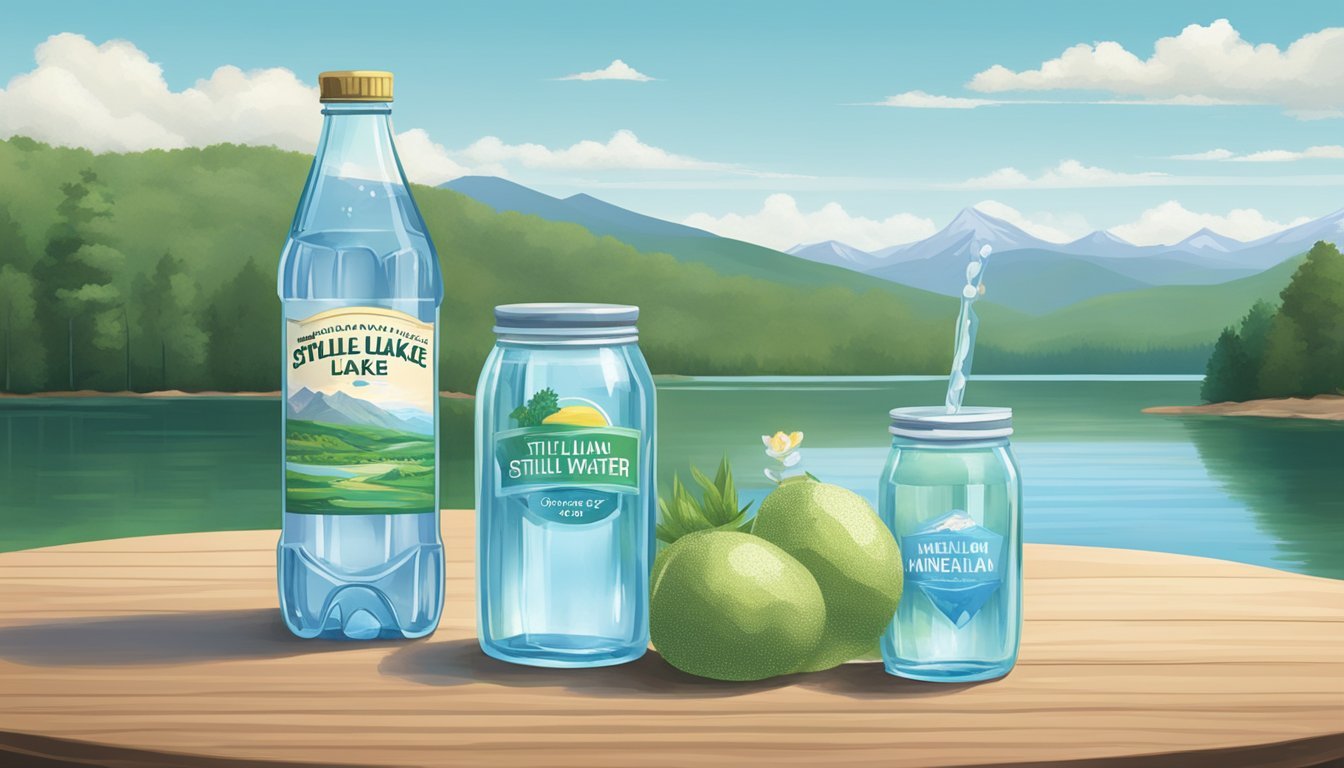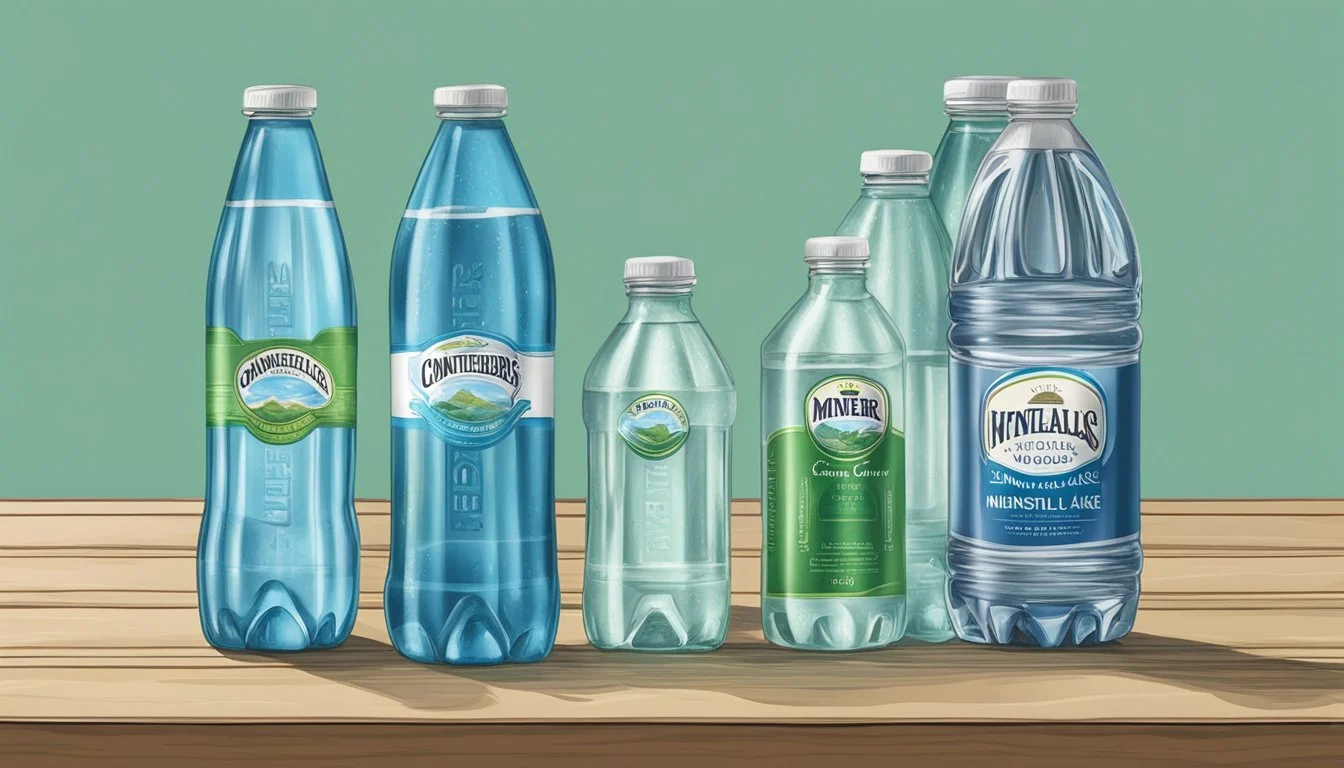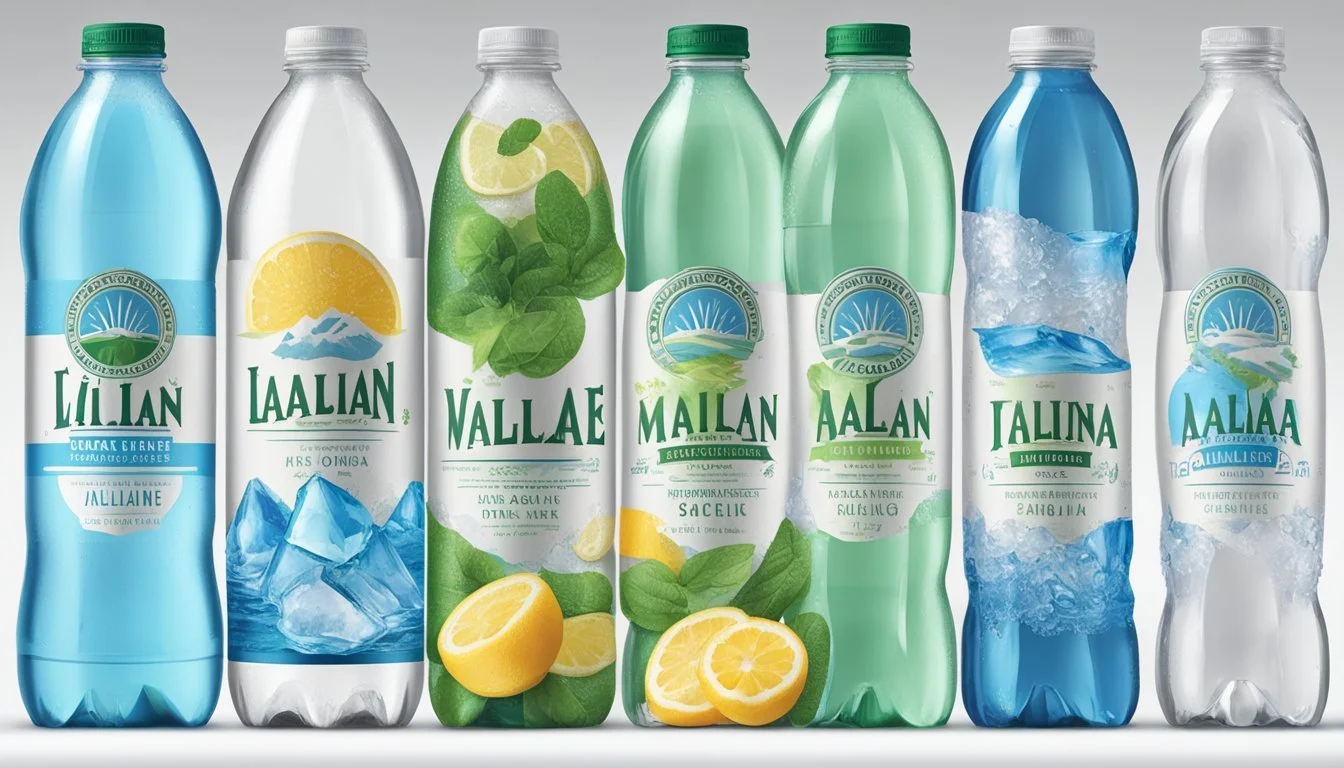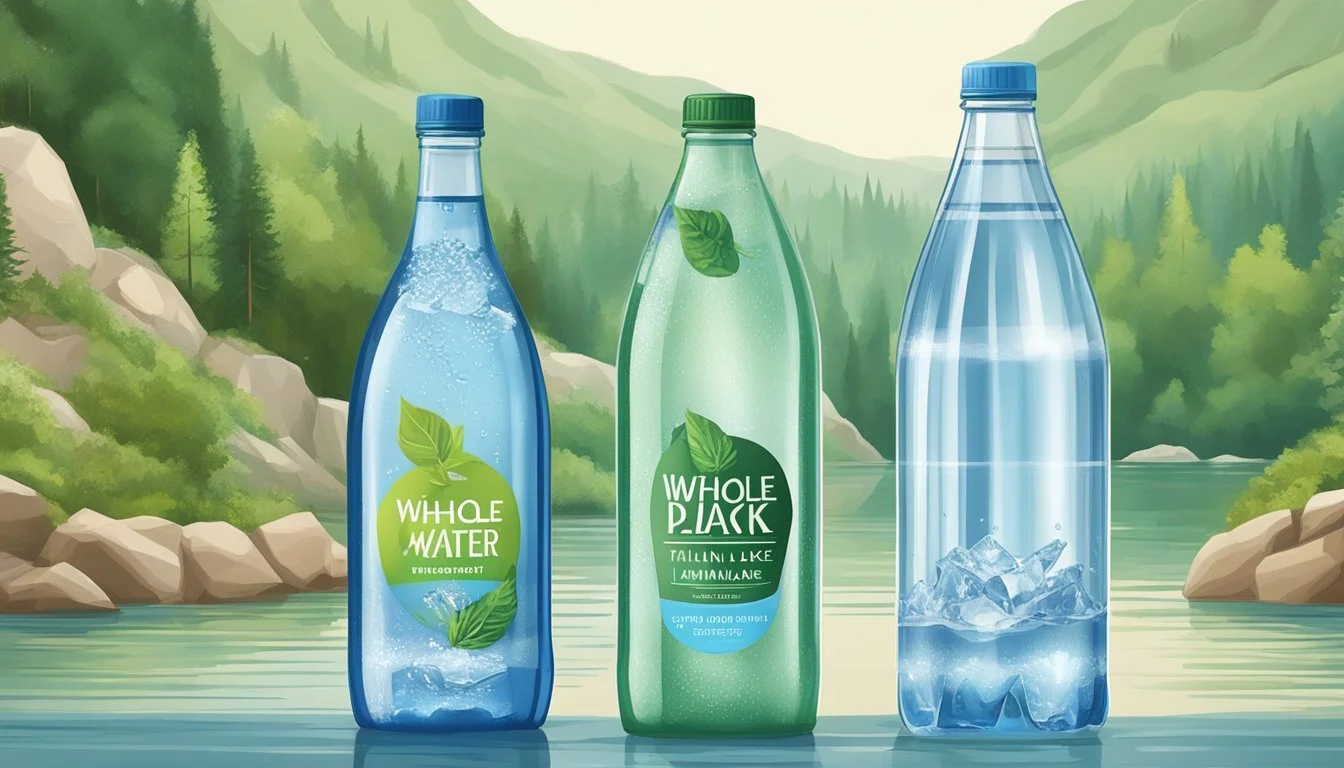Whole Foods Italian Still Mineral Water vs. Crystal Lake
Which Bottled Water is Better?
Bottled water enthusiasts often seek the perfect balance between taste, mineral content, and purity. Whole Foods Italian Still Mineral Water and Crystal Lake present consumers with two distinct choices. Known for its rich mineral content derived from natural springs in Italy, Whole Foods Italian Still Mineral Water promises a unique taste that stands out in culinary settings.
Crystal Lake offers a refreshing contrast with its exceptional purity and crisp, clean flavor. Originating from pristine sources, Crystal Lake is praised for its lack of heavy mineral taste, making it an excellent everyday drinking water. When comparing these brands, one must consider individual preferences for mineral content and the intended use, whether for pairing with meals or simple hydration.
For those favoring a rich mineral profile, Whole Foods Italian Still Mineral Water stands as a robust option, while Crystal Lake caters to those who prioritize a pure and unobtrusive taste. Each brand provides a distinct experience, catering to various needs and preferences in the realm of bottled water.
Comparing the Contenders
Whole Foods Italian Still Mineral Water and Crystal Lake Bottled Water are both acclaimed for their exceptional quality and purity. They differ significantly in their sources, quality standards, and environmental impacts.
Brand Profiles
Whole Foods Italian Still Mineral Water is sourced from La Galvanina Spa in Rimini, Italy. The water from this region is known for its rich mineral springs utilized since the 16th century. This brand emphasizes sustainability and purity.
Crystal Lake Bottled Water comes from pristine springs in Canada. This brand focuses on providing high-quality water with a commitment to environmental stewardship.
Each brand prioritizes sustainability and aims to offer a product that is both pure and environmentally friendly.
Quality and Purity Standards
Whole Foods ensures that its Italian Still Mineral Water meets stringent quality controls. The water is naturally filtered through layers of rock, giving it a unique mineral composition. Rigorous testing guarantees it is free from contaminants such as PFAS chemicals and arsenic.
Crystal Lake similarly adheres to high standards. Extracted from Canadian springs, their water undergoes multiple filtration processes to maintain its purity. The brand complies with EPA regulations, ensuring no harmful substances are present. Both waters provide clean, pure hydration.
Environmental Impact
Whole Foods places a strong emphasis on eco-friendly practices. From sourcing methods to packaging, the brand aims to minimize its carbon footprint. Their water bottles are made from recycled materials, and efforts are constantly made to reduce plastic waste.
Crystal Lake is dedicated to sustainability. They use lightweight packaging to minimize carbon emissions during transport. The company also invests in renewable energy sources and promotes recycling to lessen environmental impact. Both brands strive to maintain a balance between providing quality water and protecting the planet.
The Essence of Water
Whole Foods Italian Still Mineral Water and Crystal Lake are both premium water brands that provide unique characteristics through their mineral content, taste, and source. Understanding these elements helps to appreciate the essence of each water.
Mineral Content Analysis
Mineral content plays a crucial role in the qualities of bottled water. Whole Foods Italian Still Mineral Water is known for its clean mineral profile, featuring key elements like calcium, magnesium, potassium, and bicarbonate. Sourced from select springs in Italy, it boasts a balanced mineral composition.
Crystal Lake water also contains essential minerals beneficial for health. Their mineral content includes sodium, bicarbonates, and sulfates. Consumers often look for these minerals to support overall hydration and well-being.
By comparing the two, it's clear that both waters offer a healthy mix of needed trace elements, though their exact compositions differ, catering to varied preferences.
Taste Experience
Taste is a defining aspect often determining bottled water preference. Whole Foods Italian Still Mineral Water is praised for its clean and crisp flavor profile, with a refreshing finish that makes it popular among consumers.
Crystal Lake also delivers a pleasing taste. The presence of sodium and bicarbonates can lend to a slightly crisp and refreshing experience, which many find delightful.
While preferences vary, connoisseurs and casual drinkers note that both provide a pleasant drinking experience. With Whole Foods offering a subtle mineral taste and Crystal Lake presenting a more pronounced mineral essence, each provides a distinct drinking experience.
Source and Origin
The origin and source of mineral water significantly influence its quality. Whole Foods Italian Still Mineral Water originates from natural springs in Italy, renowned for their pure and pristine water. This water is bottled at the source, ensuring it retains its natural composition.
Crystal Lake's water is also sourced from pristine springs but is noted for being carefully monitored to maintain purity. Its naturally filtered process through multiple layers of rock enriches the water with essential minerals.
Each brand’s commitment to sourcing from natural springs highlights their dedication to delivering high-quality water straight from nature's bounty. This ensures both brands provide a refreshing and authentic hydration experience.
Health and Wellness Considerations
Whole Foods Italian Still Mineral Water and Crystal Lake both offer distinct health benefits, making them suitable options for maintaining and improving wellness. Differences in mineral content and their impact on hydration, bone health, and muscle function are important to consider.
Hydration and Body Health
Proper hydration is essential for maintaining overall body function. Whole Foods Italian Still Mineral Water is sourced from renowned regions in Italy, known for their pure and clean quality. This water contains beneficial minerals that support bone health and muscle function.
Crystal Lake, on the other hand, emphasizes its clean and fresh taste. Although less is known about its mineral profile, it is still a reliable option for everyday hydration. Both options help maintain fluid balance, critical for digestion and bodily functions.
Comparison of Nutritional Benefits
Nutritional benefits can vary significantly between brands. Whole Foods Italian Still Mineral Water is noted for its rich mineral content, including calcium and magnesium, which support bone health and muscle function. The water also boasts an alkaline nature, beneficial for digestion and maintaining optimal pH balance in the body.
Crystal Lake’s nutritional profile is less specified, focusing more on its pure taste and effective hydration. While it may lack extensive mineral information, it still plays a vital role in providing essential daily hydration.
By understanding the unique health benefits of each water brand, consumers can make informed decisions to support their personal wellness goals.
Cultural and Economic Context
Whole Foods Italian Still Mineral Water and Crystal Lake both occupy unique spaces in the global bottled water market, reflecting their distinct cultural and economic influences. These brands cater to different consumer preferences and dining experiences.
Market Presence Globally
Whole Foods Italian Still Mineral Water is recognized for its accessibility and affordability, available at Whole Foods Market locations across various countries. This availability aligns with Whole Foods' mission to offer quality products that are also conscious of environmental impact.
By contrast, Crystal Lake, while less widespread, is often associated with luxury and premium quality, attracting a clientele that prioritizes high-end consumption. The global reach of these brands influences their popularity and consumer demographics, with Whole Foods appealing to a broad audience and Crystal Lake to a niche market.
Italian bottled water brands such as San Benedetto and Sant'Anna serve as benchmarks in the bottled water industry, known for their historical significance and purity, setting competitive standards.
Culinary Reputation
In upscale dining and Mediterranean diet contexts, the choice of water can enhance the dining experience. Whole Foods Italian Still Mineral Water, sourced from renowned regions in Italy, is celebrated for its purity and health benefits. This makes it a favorable option for pairing with gourmet meals and in health-conscious culinary settings.
Crystal Lake, often found in high-end restaurants, complements fine dining due to its exceptional quality and pristine sources. Its presence at luxury dining establishments indicates its prestigious status.
Both brands contribute to the cultural value of water in dining, reflecting the broader trends seen among the International Bottled Water Association members, which emphasize quality and sustainability. These attributes make them integral to both global cuisine and the hydration habits of discerning consumers.
Packaging and Sustainability
Both Whole Foods Italian Still Mineral Water and Crystal Lake ensure their bottling and packaging choices align with modern demands for sustainability and eco-friendliness. The materials used and the recycling policies implemented by each brand provide insight into their commitment to environmental responsibility.
Material and Design Choice
Whole Foods Italian Still Mineral Water is packaged in glass bottles sourced from La Galvanina Spa Source in Rimini, Italy. Glass is a popular choice for its non-reactive properties and ability to preserve the natural taste of water without adding any flavors. The bottles are typically designed to be reusable, which reduces waste over time and provides an elegant aesthetic.
Crystal Lake, on the other hand, offers its water in recyclable PET plastic bottles. These are lighter in weight compared to glass, reducing transportation emissions which shows an effort to balance convenience and sustainability. However, the use of plastic, even recyclable, brings concerns about long-term environmental impacts if not properly recycled.
Environmental and Recycling Policies
Whole Foods emphasizes eco-friendly practices by encouraging customers to return and reuse their glass bottles. Their policies include incentives for consumers who participate in bottle-return programs, making it easy and financially beneficial to contribute to recycling efforts. This approach not only reduces landfill waste but also promotes a circular economy.
Crystal Lake focuses on ensuring recycling access by partnering with numerous recycling programs. Their bottles are designed with clear labeling to educate consumers on proper disposal methods. While they are committed to minimizing plastic waste, the effectiveness often relies heavily on consumer participation and local recycling capabilities.
Both brands aim to minimize their environmental footprint but take distinct paths through material choice and consumer-incentive programs.
Consumer Advocacy and Legislation
Consumer advocacy plays a crucial role in ensuring bottled water safety and quality. Significant focus areas include regulations and safety standards, as well as the impact of advocacy groups on industry practices.
Regulations and Safety Standards
Bottled water, including brands like Whole Foods Italian Still Mineral Water and Crystal Lake, must comply with strict EPA regulations and safety standards. These regulatory guidelines cover permissible levels of contaminants such as PFAS chemicals and lead. Compliance ensures that bottled water is safe for consumption.
The EPA mandates regular testing and reporting, making sure that companies meet comprehensive standards. This not only guarantees purity but also helps maintain public trust. Regulations are specifically designed to address potential environmental and health hazards, providing a reliable framework for production and quality assurance.
Impact of Advocacy Groups
Consumer advocacy groups have a significant influence in shaping bottled water industry practices. They focus on transparency and push for stringent standards to protect public health. These groups often highlight concerns over contaminants like PFAS chemicals and lead, driving reforms in industry regulations.
By raising public awareness, advocacy groups ensure companies are held accountable. Campaigns often result in stricter safety measures and better enforcement of existing regulations. Their efforts are essential in making sure the industry remains responsible and adheres to safe, reliable standards, enhancing overall consumer trust.
Brand Strategies and Influence
Both Whole Foods Italian Still Mineral Water and Crystal Lake deploy brand strategies designed to emphasize their unique selling points and elevate their market position. By leveraging marketing tactics and brand messaging, they aim to captivate consumers and differentiate themselves in a competitive market.
Marketing and Brand Messaging
Whole Foods Italian Still Mineral Water emphasizes its Italian origin, purity, and health benefits. The brand promotes a narrative of natural filtration, highlighting the water's journey through Italy's mineral-rich landscapes. "Made in Italy" and "real Italian mineral water" are key elements in their marketing, aiming to appeal to consumers seeking authenticity and premium quality.
Crystal Lake, on the other hand, underscores its commitment to sustainability and eco-friendly practices. Their marketing efforts focus on local sourcing, minimal environmental impact, and the pure, crisp taste of their water. This approach targets environmentally conscious consumers who value sustainability alongside quality.
Comparison of Bottled Water Narratives
Both brands craft compelling stories to enhance their appeal. Whole Foods Italian Still Mineral Water capitalizes on Italy's rich history and renowned natural properties. Its narrative often includes the historical significance of Italian mineral water and its role in Italian cuisine, showcasing it as a sophisticated choice for discerning consumers.
Crystal Lake, by contrast, builds its brand around locally-sourced purity and environmental responsibility. The brand narrative focuses on the natural filtration process and emphasizes local community support and the conservation efforts tied to their water sources.
These distinct narratives cater to different consumer segments, with Whole Foods appealing to those seeking heritage and wellness, while Crystal Lake targets eco-conscious individuals looking for purity and sustainability in their bottled water choices.
Conclusion
When comparing Whole Foods Italian Still Mineral Waterwhole-foods-italian-still-mineral-water-vs-crystal-lake and Crystal Lake, several factors come into play.
Price is a significant consideration. Whole Foods offers a more budget-friendly option, typically priced between $0.50 and $1.00 per liter. Crystal Lake's pricing can vary, often leaning towards the higher end due to its premium branding.
Quality and purity are crucial. Whole Foods' water is sourced from renowned regions in Italy, ensuring it meets high standards. Crystal Lake also prides itself on sourcing from pristine locations, emphasizing purity.
Brand reputation also matters. Whole Foods is widely recognized for its commitment to quality and sustainability. Crystal Lake, though less mentioned in the provided results, is known for its reliable and consistent quality.
For consumers, the choice may come down to personal preference regarding taste and brand loyalty. Whole Foods offers high-quality water at a competitive price, making it a popular choice. Crystal Lake may appeal to those seeking a more premium experience.
More About Whole Foods Italian Still Mineral Water
Acqua Pana vs Whole Foods Italian Still Mineral water: Which Bottled Water is Better?
Antipodes vs Whole Foods Italian Still Mineral water: Which Bottled Water is Better?
Aqua Carpatica vs Whole Foods Italian Still Mineral water: Which Bottled Water is Better?
Aquafina vs Whole Foods Italian Still Mineral water: Which Bottled Water is Better?
Arrowhead vs Whole Foods Italian Still Mineral water: Which Bottled Water is Better?
Bai vs Whole Foods Italian Still Mineral water: Which Bottled Water is Better?
Boxed Water vs Whole Foods Italian Still Mineral water: Which Bottled Water is Better?
Castle Rock vs Whole Foods Italian Still Mineral water: Which Bottled Water is Better?
Core Hydration vs Whole Foods Italian Still Mineral water: Which Bottled Water is Better?
Deer Park vs Whole Foods Italian Still Mineral water: Which Bottled Water is Better?
Erewhon vs Whole Foods Italian Still Mineral water: Which Bottled Water is Better?
Essentia vs Whole Foods Italian Still Mineral water: Which Bottled Water is Better?
Eternal vs Whole Foods Italian Still Mineral water: Which Bottled Water is Better?
Ethos vs Whole Foods Italian Still Mineral water: Which Bottled Water is Better?
Evian vs Whole Foods Italian Still Mineral water: Which Bottled Water is Better?
Fiji vs Whole Foods Italian Still Mineral water: Which Bottled Water is Better?
Flow vs Whole Foods Italian Still Mineral water: Which Bottled Water is Better?
Hawaii Volcanic vs Whole Foods Italian Still Mineral water: Which Bottled Water is Better?
Hawaiian Springs vs Whole Foods Italian Still Mineral water: Which Bottled Water is Better?
Ice Mountain vs Whole Foods Italian Still Mineral water: Which Bottled Water is Better?
Icelandic Glacial vs Whole Foods Italian Still Mineral water: Which Bottled Water is Better?
Just Water vs Whole Foods Italian Still Mineral water: Which Bottled Water is Better?
LIFEWTR vs Whole Foods Italian Still Mineral water: Which Bottled Water is Better?
Liquid Death vs Whole Foods Italian Still Mineral water: Which Bottled Water is Better?
Mananalu vs Whole Foods Italian Still Mineral water: Which Bottled Water is Better?
Nestle Pure Life vs Whole Foods Italian Still Mineral water: Which Bottled Water is Better?
Origin vs Whole Foods Italian Still Mineral water: Which Bottled Water is Better?
Ozarka vs Whole Foods Italian Still Mineral water: Which Bottled Water is Better?
Path vs Whole Foods Italian Still Mineral water: Which Bottled Water is Better?
Penta vs Whole Foods Italian Still Mineral water: Which Bottled Water is Better?
Perrier vs Whole Foods Italian Still Mineral water: Which Bottled Water is Better?
Poland Spring vs Whole Foods Italian Still Mineral water: Which Bottled Water is Better?
Purely Sedona vs Whole Foods Italian Still Mineral water: Which Bottled Water is Better?
San Pellegrino vs Whole Foods Italian Still Mineral water: Which Bottled Water is Better?
Smartwater vs Whole Foods Italian Still Mineral water: Which Bottled Water is Better?
Solan de Cabras vs Whole Foods Italian Still Mineral water: Which Bottled Water is Better?
Starkey vs Whole Foods Italian Still Mineral water: Which Bottled Water is Better?
Tahoe vs Whole Foods Italian Still Mineral water: Which Bottled Water is Better?
Topo Chico vs Whole Foods Italian Still Mineral water: Which Bottled Water is Better?
Tru Alka vs Whole Foods Italian Still Mineral water: Which Bottled Water is Better?
Volvic vs Whole Foods Italian Still Mineral water: Which Bottled Water is Better?
Voss vs Whole Foods Italian Still Mineral water: Which Bottled Water is Better?
Waiakea vs Whole Foods Italian Still Mineral water: Which Bottled Water is Better?
Whole Foods Italian Still Mineral water vs 1907water: Which Bottled Water is Better?
Whole Foods Italian Still Mineral water vs 7-Select: Which Bottled Water is Better?
Whole Foods Italian Still Mineral water vs Action: Which Bottled Water is Better?
Whole Foods Italian Still Mineral water vs Alkaline88: Which Bottled Water is Better?
Whole Foods Italian Still Mineral water vs Augi: Which Bottled Water is Better?
Whole Foods Italian Still Mineral water vs Big Chill: Which Bottled Water is Better?
Whole Foods Italian Still Mineral water vs Big Win: Which Bottled Water is Better?
Whole Foods Italian Still Mineral water vs Blk: Which Bottled Water is Better?
Whole Foods Italian Still Mineral water vs BodyArmor: Which Bottled Water is Better?
Whole Foods Italian Still Mineral water vs Cascade Mountain: Which Bottled Water is Better?
Whole Foods Italian Still Mineral water vs CBD Living: Which Bottled Water is Better?
Whole Foods Italian Still Mineral water vs Cirro: Which Bottled Water is Better?
Whole Foods Italian Still Mineral water vs Crystal Geyser: Which Bottled Water is Better?
Whole Foods Italian Still Mineral water vs Dasani: Which Bottled Water is Better?
Whole Foods Italian Still Mineral water vs Defy: Which Bottled Water is Better?
Whole Foods Italian Still Mineral water vs Essence pH10: Which Bottled Water is Better?
Whole Foods Italian Still Mineral water vs HFactor: Which Bottled Water is Better?
Whole Foods Italian Still Mineral water vs Kirkland Signature: Which Bottled Water is Better?
Whole Foods Italian Still Mineral water vs Kroger: Which Bottled Water is Better?
Whole Foods Italian Still Mineral water vs Open Water: Which Bottled Water is Better?
Whole Foods Italian Still Mineral water vs Ophora: Which Bottled Water is Better?
Whole Foods Italian Still Mineral water vs Proud Source: Which Bottled Water is Better?
Whole Foods Italian Still Mineral water vs Pure Life: Which Bottled Water is Better?
Whole Foods Italian Still Mineral water vs Ramona: Which Bottled Water is Better?
Whole Foods Italian Still Mineral water vs Refreshe: Which Bottled Water is Better?
Whole Foods Italian Still Mineral water vs Richard's Rainwater: Which Bottled Water is Better?
Whole Foods Italian Still Mineral water vs Simple Truth: Which Bottled Water is Better?
Whole Foods Italian Still Mineral water vs Skyra: Which Bottled Water is Better?
Whole Foods Italian Still Mineral water vs Talking Rain AQA: Which Bottled Water is Better?
Whole Foods Italian Still Mineral water vs The Well: Which Bottled Water is Better?
Whole Foods Italian Still Mineral water vs Weird Water: Which Bottled Water is Better?
Whole Foods Italian Still Mineral water vs Whole Foods 365: Which Bottled Water is Better?
Whole Foods Italian Still Mineral water vs Zenwtr: Which Bottled Water is Better?
Zephyrhills vs Whole Foods Italian Still Mineral water: Which Bottled Water is Better?
More About Crystal Lake
Aqua Carpatica vs Crystal Lake: Which Bottled Water is Better?
Cascade Mountain vs Crystal Lake: Which Bottled Water is Better?
Core Hydration vs Crystal Lake: Which Bottled Water is Better?
Crystal Geyser vs Crystal Lake: Which Bottled Water is Better?
Crystal Lake vs Essence pH10: Which Bottled Water is Better?
Crystal Lake vs Proud Source: Which Bottled Water is Better?
Hawaii Volcanic vs Crystal Lake: Which Bottled Water is Better?
Hawaiian Springs vs Crystal Lake: Which Bottled Water is Better?
Ice Mountain vs Crystal Lake: Which Bottled Water is Better?
Icelandic Glacial vs Crystal Lake: Which Bottled Water is Better?
Kirkland Signature vs Crystal Lake: Which Bottled Water is Better?
Liquid Death vs Crystal Lake: Which Bottled Water is Better?
Mountain Valley Spring Water vs Crystal Lake: Which Bottled Water is Better?
Nestle Pure Life vs Crystal Lake: Which Bottled Water is Better?
Poland Spring vs Crystal Lake: Which Bottled Water is Better?
Purely Sedona vs Crystal Lake: Which Bottled Water is Better?
Richard's Rainwater vs Crystal Lake: Which Bottled Water is Better?
San Pellegrino vs Crystal Lake: Which Bottled Water is Better?
Simple Truth vs Crystal Lake: Which Bottled Water is Better?
Solan de Cabras vs Crystal Lake: Which Bottled Water is Better?
Talking Rain AQA vs Crystal Lake: Which Bottled Water is Better?
Whole Foods 365 vs Crystal Lake: Which Bottled Water is Better?





